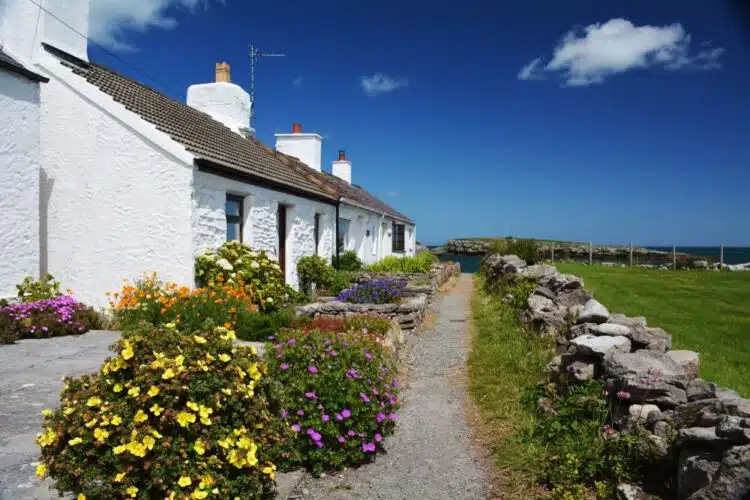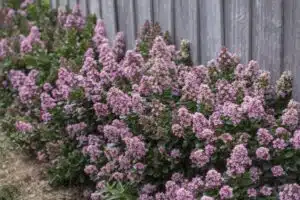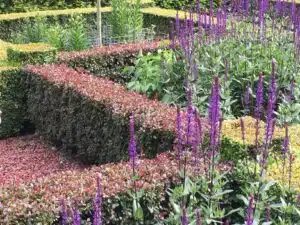HALF PRICE SALE ON EVERYTHING ENDS AT MIDNIGHT TONIGHT
NEW SEASON BARE ROOTS AT 50% OFF LAST SEASONS PRICES – ENDS 31 JULY
GET AN EXTRA 10% OFF ALL SALE PRICES WITH CODE FLASH 10 – TODAY ONLY!
Menu
HALF PRICE SALE ON EVERYTHING ENDS AT MIDNIGHT TONIGHT
NEW SEASON BARE ROOTS AT 50% OFF LAST SEASONS PRICES – ENDS 31 JULY
GET AN EXTRA 10% OFF ALL SALE PRICES WITH CODE FLASH 10 – TODAY ONLY!
 https://www.hopesgrovenurseries.co.uk/wp-content/uploads/2024/02/shutterstock_1220471128-750x500.jpg
https://www.hopesgrovenurseries.co.uk/wp-content/uploads/2024/02/shutterstock_1220471128-750x500.jpg
One of the Golden Rules of gardening is growing plants that thrive in your particular conditions and our tiny island provides plenty of variation in soil and climate. If you’re close to the coast, it’s a mixed bag. The presence of the sea definitely mitigates low temperatures, so you can grow plants that would probably succumb to wintry weather if planted further inland. The maritime effect is felt, even if you’re a few miles from the coast, so you’ll get away with fuchsia hedges and they may well flower for many months, because they won’t get cut back by hard weather.
However, coastal areas can be very windy and those winds tend to be salt-laden and these conditions can prove lethal to some plants. Leathery-leafed evergreens can thrive. Fine needle-leafed plants and spiny plants are also toughies in this situation. Bear in mind that the western half of Britain is milder and damper than eastern, coastal districts. Our southern shoreline is getting warmer and drier every year and these are all considerations.
Going Floral
If you’re in a sheltered position close to the coast, in an area that gets plentiful rainfall, fuchsia hedging adds an ornate richness to a garden boundary. The floral contribution can be a year-long affair in milder areas. Lee Bay in North Devon, along with villages close to the Menai Strait, have flowering fuchsia hedges that continue to bloom throughout winter due to the local maritime climate. If winter happens to halt your display, wherever you are, simply cut back the stems to the highest emerging buds in late spring.

The most opulent, hardy fuchsia is definitely ‘Mrs Popple’. Her red outer flyaway skirt surrounds a rich-purple ballgown and the dangling red stamens add extra bling. Her flowers are full and substantial, more so than any other hardy fuchsia. This was spotted in the Stevenage garden owned by Mrs Popple in the early 1930s, by a sharp-eyed nurseryman named Clarence Elliott (1881-1969). He ran a very successful nursery called Six Hills, until the Second World war intervened. Following the war, his nursery land was claimed for housing because Stevenage was one of the new towns.
Clarence, who was besotted by alpines, was responsible for spotting a cracking nepeta now named ‘Six Hills Giant’, along with a saxifraga called ‘Elliott’s Variety’. Mr and Mrs Popple’s garden was right by Clarence’s Six Hills Nursery in Stevenage. Clarence noticed the fuchsia, but assumed it was bedded out each spring. However, he asked Mrs Popple about it during a tennis party. How Betjemanesque! She told him that it stayed out every year and had done for at least 20 years, in the same position. He asked for cuttings and the rest is history, a story relayed to me by Mrs Popple’s family and Joe Elliott, Clarence’s son. Clarence was a plant hunter and one return voyage he brought back some blue eggs from South America. Waitrose still sell Clarence Court eggs, derived from Clarence’s original half dozen.
The smaller flowered Fuchsia magellanica is more delicate, although appearances are deceptive. This is probably the hardiest fuchsia of all and it can be grown all across the country. The name magellanica refers to the Straits of Magellan on the southern tip of Chile, and the plant’s named after the Portuguese explorer Magellan. He sailed through in 1520 and might have seen this fuchsia on his travels. It was collected by an unknown sailor from Wapping in the late 18th century and he placed some flowers on his windowsill. News of the unusual flower spread and one Scottish nurseryman, James Lee of Hammersmith, tracked it down and bought pieces of the plant. At first it was thought tender, but it’s proved hardy.

‘Riccartonii’ also has a Scottish connection. It was raised in 1830 by Mr Young, a head gardener from Riccarton in Scotland. ‘Versicolor’ has leaves in shades of grey-green, pick and ivory-white foliage. Ideally all fuchsias like cool, moist roots, with their heads in dappled light. Honeysuckles enjoy that too. They love a west-facing position.
Escallonias, also from Chile, are excel in coastal areas. Their shiny evergreen leaves and clusters of small flowers look very dainty. They tend to be slow-growing and they’re not fully hardy. However, they thrive close to the sea in well-drained positions that aren’t exposed in winter. ‘Appleblossom’ is slow-growing hybrid with pink and white flowers. This will reach 4 – 6 feet, or 1.5m, and you’ll need 2 -3 plants for each metre of hedge.
If you want fuller pink flowers, with rather lilac-like racemes, opt for the newly raised Escallonia leavis ‘Pink Elle’. This compact low-grower will only reach 3 feet or 1m in height and you’ll need to plant 3 or 4 for each metre of hedge. It’s also makes a fabulous specimen plant in a large pot, because the high-gloss foliage and pretty flowers are eyecatching. Trim lightly after flowering.

Mophead hydrangeas, forms of Hydrangea macrophylla, thrive along the coast of Britain. Sometimes known as Hortensias, these can be spectacular. They adore summer rain, because this plant hails from coastal regions of Japan where summer delivers a short but intense rainy season. Heavy rain falls, stops and then cicadas start to screech. Their chorus announces hot sun isn’t far away and then the ground steams within seconds. I once witnessed a troupe of English Shakespearian actors singing The Rain It Raineth Everyday in an outdoor performance during one of these torrential Japanese downpours. The memory will stay with me forever! Japanese winters, of course, are drier.
Their rainy season provenance means that you may have to water your hydrangeas in dry summers, particularly when newly planted. You can also position them on the shadier side of a low wall, to keep the roots hydrated. Flower colour will depend on your soil, because acid conditions are needed to produce true-blue flowers. Pine needles help to reduce the pH, but there are also specialist products containing sequestered iron. You can harvest and dry the flowers for the house, or leave them to turn to shades of parchment.

The Scottish rose or burnet rose, Rosa pimpinellifolia, has small white flowers and small deep-green leaves. It suckers, thereby forming a dense thicket measuring up to three feet in height. Both of these coastal roses, R. rugosa and R. pimpinellifolia, tolerate poor soil and they will happily grow in many places, besides coastal regions. Bare-root planting is the best way to go. Plants are dispatched between November and March. Plant into well-prepared soil in clement weather. If the ground is frozen, heel them into a sheltered spot.

Thorny barriers are sometimes useful deterrents and berberis is one of the prickliest on offer. It forms dense hedges and the foliage often colours up in autumn. If you want a low stepover hedge, opt for Berberis thunbergii ‘Atropurpurea Nana’, otherwise known as Dwarf Purple. Straw-yellow flowers appear in April above wine-red foliage and this turns darker in autumn. Berberis darwinii, discovered in South America by Charles Darwin in 1835, has vivid pollinator-friendly orange flowers and almost black berries follow. In the past these were eaten by native Patagonians. B. darwinii is relatively fast-growing, putting on an average of a foot a year.
Perhaps the speediest grower of all is B. x ottawensis and this bears pendent racemes of egg-yolk yellow flowers, followed by downward swags of red berries. This forms a shoulder-high hedge fairly quickly, because this vigorous hybrid can put on between a foot and two feet of growth per year. It’s perfectly happy close to the sea.
The ground, for all barberries, should be reasonably well drained: they hate waterlogged soil. If you trimming a hedge in spring, you may not get flowers. If you want flowers, leave the trim until after the flowers have finished. Most are deciduous and all of them are tough!
Many of our customers buy topiary plants (and hedging plants) to grow in containers, one frequently asked question is how large does the pot that I plant them into need to be?
Expert horticultural advice on the merits and pitfalls of planting bare root yews, and how to get the best from them.
Pleached trees are a garden-design favourite, because they provide an instant leafy screen that looks stylish as soon as it’s planted. They offer privacy for you and they help to muffle noise and that’s becoming more important in our busy world. They provide a living screen that’s far more eco-friendly than a stark wooden fence…